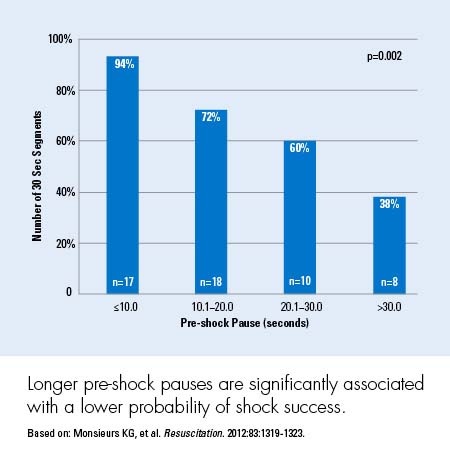
They include providing chest compressions at a rate of 100–120 compressions per minute, providing chest compressions with adequate depth of at least 5 cm, minimising interruptions in the chest compressions, averting leaning on the chest between compressions and avoiding excessive ventilation. American Heart Association (AHA) 2020 CPR guidelines have defined objective parameters to maintain the CPR quality. High-quality cardiopulmonary resuscitation (CPR) determines the outcome of in-hospital cardiac arrest (IHCA) patients. Our study shows that health-care providers in our hospital provide high-quality CPR, and chest compression fraction is independently associated with ROSC in IHCA. The mean CPC among the survivors was 1.4 (SD ± 0.5). A multivariate logistic regression test showed higher odds (1.125) of ROSC in patients with high chest compression fraction.

We found that the patients with ROSC had a significantly higher chest compression fraction of 80% (SD ± 5), as compared to 75% (SD ± 5), in whom ROSC could not be achieved. A total of 73 (58%) patients achieved ROSC and among them, 11 patients (9%) survived to hospital discharge. We included 126 patients in the study the mean chest compression fraction achieved was 78% (standard deviation ± 5). Patients who survived were followed until discharge, and their neurological score was determined using the cerebral performance category (CPC). The chest compression fraction was calculated and correlated in patients with ROSC and without ROSC. An observer would assess the quality of CPR provided by noting the time spent on chest compression. This prospective observational study was conducted in patients aged >18 years who developed IHCA. The aims of this study were to know the quality of CPR provided during in-hospital cardiac arrest (IHCA) by analysing the chest compression fraction and to see the correlation of chest compression fraction with return of spontaneous circulation (ROSC) in the hospital setting. Chest compression fraction is the proportion of time spent on chest compression during cardiopulmonary resuscitation (CPR).


 0 kommentar(er)
0 kommentar(er)
